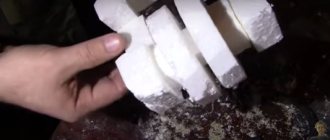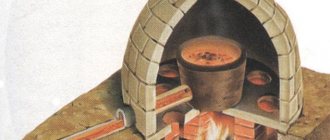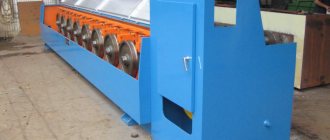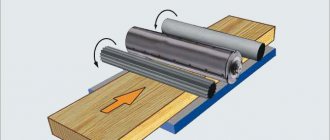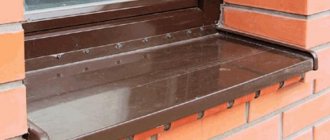Steel casting is a process that produces alloys with different chemical compositions. Technologies have been developed where charge, used metal products and cast iron are used as raw materials. The resulting blanks comply with GOST parameters.
The casting process produces products of varying quality. It depends on the manufacturing method. It is important that harmful impurities that make the alloy brittle are disposed of. This happens due to their oxidation, when iron interacts with oxygen.
Steel casting
The importance of steel in global industry
Metallurgy - steel production
The global steel industry is one of the most developed branches of metallurgy. Despite the recent decline in production due to the financial crisis of 2012, steel casting has received a new impetus and is now rapidly gaining momentum. The annual demand for this method is steadily increasing due to trends towards urbanization and industrialization. The main buyers of steel products are countries with well-developed infrastructure and industry. Steel production in the world accounts for about 90% of the volume of all metals.
Steel is widely used in the construction of roads, buildings and infrastructure: the largest stadiums, airports and bridges usually have a steel skeleton. Bolts, nails and screws are also made by casting steel into special molds. Despite the growing share of aluminum in the world market, steel casting will not lose its position for a long time. At the same time, steel production is characterized by cyclicality and, consequently, relative instability.
How does the process work?
To produce complex parts by injection molding, the material is pressed into a special mold. It exactly repeats the configuration of the element of the future product and is made of a material that differs in composition, depending on the parameters of the future product. For small ones, an elastic, lightweight composition is used (wax, paraffin or stearin), and for large ones, a harder and more durable one is used (plastic, polystyrene). The materials do not form defects - changes in the shape of the cast product during the cooling process under pressure. The dimensions of the casting are calculated with allowances for shrinkage of the composition.
Finished individual forms are assembled into blocks and sent for pouring. At this stage, the prepared mold and all elements of the gating system (part cavities) are covered with a liquid mixture with a binder filler. Next, the mold is sprinkled in several layers. Each layer has a different grain fraction and requires careful drying. As a result, a dense shell shape of the created block is formed. After heating, it is calcined at high temperature (about 1000 ° C) to eliminate foreign gas-forming substances.
Next, heated metal is poured into the resulting mold. The contents are cooled and sent for beating, which is done using hammers. Castings obtained by this method are highly accurate.
The technology has virtually no disadvantages, and its advantage is the ability to produce elements from alloys that cannot be machined, as well as the production of connected castings with precise dimensions, which are necessary to obtain equipment components and do not require their additional assembly from small parts. Model casting is used in pilot, serial and mass production. In addition to high strength, these castings have good surface finish. This method is used for the production of important key parts.
- the model is made of low-melting material;
- parts are assembled into blocks;
- surrounded by a ceramic shell that hardens and forms a shape;
- with further heating of the mold, the casting model melts and is removed;
- Metal is poured into the cavities that appear (gating system), which exactly repeats the original shape of all elements of the future part.
Characteristics of steel
Characteristics of steel
Steel owes its appearance to iron - it is an alloy of iron (Fe) with a certain carbon content (C). The proportion of the latter in the mixture should vary from 0.1 to 2.14%. Moreover, alloys containing more than 0.6% carbon in their composition are called “high-carbon.” Such materials are particularly durable, since carbon gives steel hardness and reduces its ductility. If the carbon content exceeds 2.14%, then the material is classified as cast iron.
During the steel casting process, so-called alloying elements (tungsten, vanadium, manganese, chromium, titanium, cobalt and others) can be added to the alloy. This procedure is aimed at giving the final material the desired properties, such as strength, ductility, workability, etc. At the same time, the mass fraction of iron content must remain at least 45%.
Regardless of the method of producing steel, the material contains small amounts of impurities of manganese, phosphorus, sulfur and silicon. These elements can negatively affect human health, so steel is not a highly environmentally friendly material.
Vibration dampening
Damping capacity may be a key variable to consider. When considering how and where a material is used, effective damping can create stronger, more reliable performance. Lack of damping capacity can result in excessive vibration and noise such as ringing or squealing.
The graphite structure in cast iron, especially the flake formation in gray cast iron, is particularly good at absorbing vibration. This makes cast iron ideal for engine blocks, cylinder bodies and machine beds.
Type of steel
There are several generally accepted classifications of steel casting depending on the evaluation criterion. According to the quality and method of production, steel is divided into:
- ordinary quality;
- quality;
- improved quality;
- high quality.
Attitude to a particular category is determined by the percentage of the above-mentioned harmful impurities and compliance with technological and mechanical characteristics. Each type has its own scope of application. According to their chemical composition, steel alloys are divided into:
- Carbon, designed for static loads. Internally, the group is divided into low-, medium- and high-carbon steel.
- Alloyed, containing additional elements that affect the physical properties of the material.
What is the difference between cast iron and cast steel?
As a manufacturing method, casting provides exceptional design productivity, often eliminating the need for additional assembly and fabrication. Here we compare cast iron to cast steel to understand how to get the best performance from each material.
Many materials can be cast, including several types of metals and synthetic materials. However, iron and steel in particular have excellent mechanical properties suitable for a range of applications.
Although they may look the same on the surface and have the same shine, it is important to know the advantages and disadvantages of each from a manufacturing and application standpoint. Knowing and not knowing can mean the difference between well-functioning, unrelenting strength and durability and broken or warped parts that quickly lose their shine.
Classification
In addition, there is a classification according to the method of using steel:
Steel classification
- Construction - an ordinary material with good weldability.
- Structural – characterized by a high carbon content, suitable for frames, roofing, and rail manufacturing.
- Instrumental – used for cutting tools (cutter, chisel, chisel, drill, file, etc.).
- Alloyed - a universal mixture with a special admixture. Subtype – low-alloy steel for harsh climatic conditions.
- Special purpose steel is used in precision shipbuilding and electrical engineering.
Weldability is another important criterion for steel casting, which became the basis for dividing alloys into groups. This property is determined by the ability to deoxidize:
- Calm - completely deoxidized, contain a minimal amount of non-metallic impurities.
- Semi-calm, similar in quality to calm.
- Boiling steels are non-oxidized steels with a high percentage of non-metallic components.
For convenience, a special marking was introduced, which allows you to determine what type a particular alloy belongs to and what basic characteristics it has. It is important to remember that there is no global system, and each country has its own. Thus, on the territory of Russia it is customary to adhere to numerical and alphabetic designations.
Scope of technology
The scope of application of this method is the production of castings weighing from several grams to tens of kilograms. These are cases and elements of devices, cutting and medical instruments, parts for cars, photo and video equipment, sewing and textile equipment, for performing some elements of artistic casting, as well as in the jewelry industry.
Lost wax models are made in molds from paraffin, wax, and stearic compounds, including fatty acids. These compositions are characterized by high elasticity, completely fill all cavities and give a clear imprint.
The use of casting technology opens up enormous potential for engineers, making it possible to design complex thin-walled structures and connect individual parts into compact, solid-cast units. At the same time, the weight and dimensions of products are significantly reduced, non-standard elements necessary in the process of accelerated development of technical progress are created, designs become more complex, many components and assemblies are modified, improved and adjusted. Over time, the composition of the castings was also modified. In some cases, it was necessary to create heat-resistant alloys, which were obtained by using nickel.
Basic steel casting processes and technologies
With the development of industry, the demand for a material more resistant to external influences increased, and man was faced with the task of creating it, having in his arsenal only scientific guesses and equipment that left much to be desired. Thanks to the inquisitiveness of scientists, many methods of steel smelting have been developed. The process consists of several stages.
Fuse
Steel melting device
Several centuries have passed since the discovery of steel as a building element, during which many casting methods were patented and implemented. Recently, it began to melt mainly in several ways. Most of them are united by belonging to electric smelting methods of metal processing. Electric furnaces are the best units available today, allowing you to melt the mixture quickly and efficiently by precisely adjusting the melting and pouring temperatures.
The first method is electric arc furnaces. An electric arc with an operating voltage of up to 600 V and a current of up to 10 kA is used as a heat source. The arc length is adjustable, and the furnace is equipped with a refractory casing and a working window to control the melting process. The capacity of the arc furnace can reach 400 tons.
The second popular method of steel processing is induction electric furnaces. These units are divided into designs with and without a core. The first group is low frequency furnaces, which consist of a shaft and channels covering the core and primary winding of the transformer (inductor). Liquid metal poured into the channel provokes the creation of a secondary coil with a powerful electric current, whose energy is transformed into heat. The material heats up quickly, which significantly saves raw materials and energy. An additional advantage of the unit is that there is no need to clean the channels after the previous casting.
Oxygen-converter method of steel melting
Additional Methods
Induction oven
Coreless induction furnaces are air transformers, the operating principle of which is based on the absorption of released electromagnetic energy by a charge (metal raw material) loaded into a crucible. Furnaces of this type are divided into industrial frequency equipment (50 Hz) and high frequency equipment (more than 500 Hz).
Electricity allows you to quickly heat the mold, so it is advantageous to produce alloy steel in the above units. However, methods such as oxygen-converter and open-hearth processes are no less popular.
The oxygen-converter method involves casting steel from cast iron by oxidizing its impurities by blowing oxygen. The system is characterized by simplicity and high production speed. The temperature in the chamber is maintained by the oxidation process itself, usually around 1600 °C.
The open-hearth process has deep roots in history - only in 1864 it was possible to achieve the temperature indicators necessary for the operation of chemical reactions. Nevertheless, due to the relative ease of implementation, the method is still widely used today.
Internally, the smelting process is also traditionally divided into 3 main stages:
- Heating the charge and melting it.
- “Boiling” the bath - heating to maximum temperatures for intense oxidation.
- Deoxidation - at the same stage, if necessary, alloying is carried out.
Diagram of an induction furnace with a steel core
Alloy casting
Once the inside of the furnace or chamber has been heated, melted and transformed into a steel alloy, it must be cast into molds. This happens thanks to the so-called gating system. It is a set of channels and reservoirs for supplying metal to a casting mold.
There are different types of molds for casting steel, the most common of which are:
Features of the production technology of shaped castings from aluminum alloys
- sand molds for casting are disposable, made from a mixture of quartz sand, refractory clay and coal dust with sawdust;
- shell molds for casting – ensure hermetic accuracy, automate the production of casting, the ingots are less rough;
- lost wax molds for casting – used for the manufacture of high-precision parts of any complexity.
Each type of casting mold has both advantages and a number of disadvantages, so the choice in favor of one or another method is made taking into account the specifics of the production of a particular product. Thus, sand molds are cheap, but of poor quality, while steel casting using lost wax models guarantees high accuracy, but does not always justify the high cost.
The most economical method of casting steel ingots was developed, called “continuous” - the resulting alloy from the ladle enters an intermediate casting mold, and from there into a copper crystallizer, where it begins to slowly solidify. At the exit, the ingot is captured by special pulling rollers and additionally cooled with water. The speed of drawing steel from the mold is about 1 m/min, after which the resulting profile is cut into pieces of the required size using an oxy-acetylene blade.
Casting Casting Machine
Lost wax casting
This method was used for casting sculptures many years ago. In the 40s of the twentieth century, it found application in the field of mechanical engineering.
It is characterized by a labor-intensive process and high prices. But in many situations the use of such technology is justified, for example:
- In the absence of subsequent mechanical processing.
- If the machining itself is too complex and time-consuming.
- Difficult-to-cut alloys are used.
There are a large number of castings made using lost wax models, as well as recipes for model and molding mixtures.
A mixture containing 50% stearin and paraffin is widely used. Under slight pressure, a low-melting alloy in a molten state is placed into the mold from the furnace. The result is fusible models that maintain precise dimensions.
The low-fusibility model is removed from the mold when the product has completely hardened. Then everything is assembled into blocks with a gating system. The next stage is immersion in a refractory suspension, the composition of which includes 70% quartz flour and 30% hydrolyzed ethyl silicate solution with increased adhesiveness. The block with the models is sprinkled with quartz sand and then dried. These operations are repeated several times to ultimately obtain a structure with a thickness of 5-8 millimeters.
Melting occurs with the help of hot air, the temperature of which will be 120-150 degrees; the use of cold water is also acceptable. The lined and dried mold is placed in the metal jacket when it comes to large varieties of castings. Then everything is covered with sand and compacted, or covered with metal mixtures.
Then the finished mold is calcined until the temperature reaches 850-900 degrees. Under such conditions, all remaining fusible metal burns out. The mold itself becomes a durable ceramic shell.
The molten alloy is placed into a mold. Use centrifugal forces when the need arises.
The casting blocks are knocked out of the flasks after the metal has hardened. Separately, the ceramic crust is beaten. To do this, the castings are leached in a bath of solution at 120 degrees. Then all that remains is to rinse everything in hot water. Many factories automate and mechanize processing processes.
To obtain precision castings, the industry began to use the following technologies:
- According to gasification models.
- Based on burnt-out models.
- By defrosting.
- Based on soluble.
- Gas-firing models or the use of foam models are one of the most promising methods.
In this case, it is assumed that one-piece forms will be used. The model is not extracted from them. The heat of the molten metal provides gasification. The mass of the final castings ranges from 0.2 kilograms to several tons.
Expanded polystyrene itself, which is used in the manufacture of parts, is characterized by its low density. Its decomposition occurs at 300-350 degrees. As a result, only styrene vapors are released; processing is carried out even with ordinary wire and knives.
For individual production, foam models are taken and undergo manual processing. Saws, planes and machines become indispensable assistants in this process. Models can be made in parts and then combined into a single whole.
Foaming inside molds made of plastic or metal is a method that is used in the case of large-scale production. Polystyrene granules are loaded inside a mold with a cavity that resembles the model in configuration and size. The granules begin to foam and expand when heated and sinter with each other. The mold cavity is filled completely. The model is removed from the mold after cooling is complete.
Conventional methods are used to mold foam models in molds. Shaking and vibrating machines are used for molding sands.
The mold is filled with alloy when production is almost complete. The model is undergoing gasification. Gases are removed into vents. The casting is formed in the place where the model used to be.
Making castings on a foam base also involves other methods. At the final stages, model removal involves the use of the following technologies:
- Dissolution.
- Calcination of the mold.
- Electric smelting.
- Mold blowing.
Foam models can easily replace lost wax counterparts.
